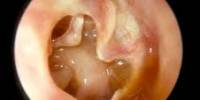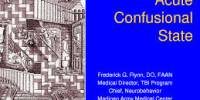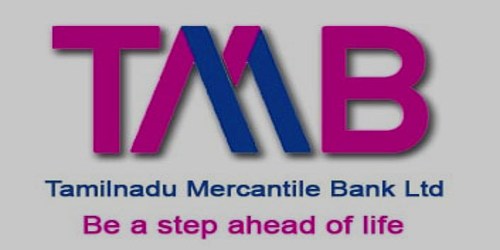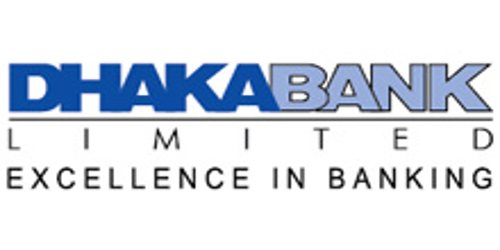INTRODUCTION
Infantile spasm, also known as West’s Syndrome or salaam spasm were first described by Dr. West in a letter he wrote to the Lancet in 1841 (Hancock & Osborne, 2002). Infantile spasm, which is one of the most recognized but peculiar types of epileptic encephalopathies recognized as catastrophic epileptic syndromes having a special type of seizure characterized by clusters of brief muscle contractions (Linan et al., 2011) followed by a more sustained tonic phase which remains distinct from myoclonic and tonic seizures. Seizures in infantile spasm is typically divided into 3 types: flexor, extensor and mixed spasms; but can also be asymmetric (Mackay et al., 2004) and involves brief contractions of neck, trunk and extremities lasting up to few seconds and frequently occurring in clusters (Pellock et al., 2010) as the electroencephalography (EEG) demonstrates it distinctly typical pattern called hypsarrhythmia.
They often occur in clusters and as many as 100 spasms occurring in a single cluster, each individual spasm lasting few seconds only. These clusters frequently occur as the infant is awaking from sleep and are commonly associated with a cry (Hancock & Osborne, 2002). Hypsarrhythmia is used to describe an EEG pattern that is characterized by random, high voltage and slow waves. The most striking features of hypsarrhythmia are high –voltage slow waves from many foci, and varying with time and a lack of synchrony, with a generally “chaotic” appearance. The typical appearance is more likely to be found in earlier stage of infantile spasm and when onset occurs at a younger age. The hypsarrhythmic pattern may disappear during rapid-eye-movement (REM) sleep, but it may be found with greater sensitivity in some other stages of sleep (Lux et al., 2004).
Infantile spasm occurs mostly between 3-7 months and 90% occurs in 1st year of life (Matloob et al., 2005) though it may occur up to 4 years of age. In most cases they resolve by the age of three, though rarely can persist up to 10-15 years of age (Hancock & Osborne, 2002). The incidence of infantile spasm ranges between 2-3.5/10,000 live births (Pellock et al., 2010) and occur in all ethnic groups with boys affected slightly more than the girls (ratio 3:2).. In China the incidence of infantile spasm has been reported to occur 1 in every 2,000- 4,000 infants constituting 2-3% of childhood epileptic syndrome (Linan et al., 2011). Another study showed incidence of infantile spasm to occur from 0.25-0.6 per 1000 live birth (Shahnaz et al., 2010). Despite huge advances in medicine, infantile spasm still remains a poorly understood entity, although with newer imaging techniques it is possible to elicit underlying causes of these spasms, still their patho-physiological basis and treatment remains illusive (Hancock & Osborne, 2002).
Etiological classifications of infantile spasm includes: (i) symptomatic (have clearly defined underlying cause and/or significant developmental delay prior to spasm onset, (ii) cryptogenic (no underlying cause and had normal development prior to onset of spasms), iii) idiopathic. The prevalence of symptomatic infantile spasm has increased for improved diagnostic techniques, such as, metabolic and genetic testing and neuro-imaging (Pellock et al., 2011).
Of the several predisposing factors of infantile spasm (genetic, perinatal and postnatal etiologies) (Matloob et al., 2005) >50% have underlying neurologic disorders often leading to physical and mental handicaps (Lux et al., 2004). There is an association with a number of disorders – some of which are known at disease onset (e.g. cerebral palsy, Down’s syndrome etc.),whilst others are discovered on investigation after the onset of spasm (e.g. tuberous sclerosis, neuronal migration disorder etc). However, in a significant minority of cases the etiology remains unknown (Hancock & Osborne, 2002).
Outcome of infantile spasm depends on etiology and is usually more favourable in cryptogenic infantile spasm. Delay in diagnosis is common and negatively influenced final seizure outcome (Veena et al., 2008). Outcome will be assessed by cessation of spasms, reduction of time to spasms and resolution of EEG abnormality.
Among the many pharmacological agents tried for management of infantile spasm, ACTH, oral corticosteroids and vigabatrin have yielded the most significantly favourable results (Harinder, 2006). From 1958-2002, 24 studies of case reports observed that ATCH & prednisolone were the most common agent used (Pellock et al., 2010). Second-line drugs includes B6, nitrazepam, valporic acid, leviteracetam, zonisamide, and topiramate. (where ACTH or Vigabatrin has failed) (Bradley et al., 2009). However, these drugs are not without side-effects. ACTH and prednisolone are commonly associated with irritability, acne, weight gain, increased appetite, “moon face”, hypertension, hyperglycemia, gastrointestinal bleeding. ACTH often cause anaphylaxis, hypertension, growth retardation. However, it is generally accepted that the adverse effects of ACTH are primarily dose dependent (Yoko et al., 2005). Vigabatrin may cause irreversible severe visual handicaps (Lux et al., 2004).
In the United States, many physicians perceive ACTH as first-line therapy, as this is the only treatment in the 2004 as American Academy of Neurology practice parameter classified it as “probably” effective (Eric et al., 2009).¬¬ Efficacy of ACTH for resolution of clinical spasms has varied from as low as 33% to as high as 100%, with relapse rates of 8-50%. Resolution of hypsarrhythmia with ACTH also varied with rates from 21 – 100%. Two large surveys were performed independently by United States and Japan to determine the drug of choice for infantile spasm treatment. ACTH, as initial therapy is used in 88% patients in USA most frequently at a dose of 40 IU/day for 1-2 months, irrespective to etiology (Mackay et al., 2004).
On reviewing some randomized controlled trials (RCT) and crossover studies, to evaluate the efficacy and safety of high-dose and low-dose ACTH evidencing a trend towards more complete cessation of spasm in low-dose ACTH group and no difference in disappearance of hypsarrhythmia between high and low-dose ACTH but high-dose ACTH produced more adverse effects than a lower one concluding that low-dose ACTH might be preferable for its comparative efficacy and lower risk profile (Linan et al., 2011).
Initially, it was thought that prednisolone was as effective as ACTH. More recently, it has been shown that ACTH is superior to 2 mg/kg/day prednisone and high dose is no better than low-dose ACTH (Matloob et al., 2005). The 2 mg/kg/day dose of prednisone has been suggested to be too low in the Cochrane review (Hancock & Osborne, 2002). United states consensus reported that in a study, patients were given 10 mg prednisolone 4 times/day for 2 wks or, 20 mg prednisolone 3 times/day after 1 wk if spasm continued. The findings showed that 70% (21/30) patients with this regimen had a good clinical response (Pellock et al., 2010). Recently, high-dose prednisolone produced high clinical efficacy for infantile spasm cessation using 40 mg oral prednisolone/day for 2 weeks (Lux et al., 2004).
RATIONALE:
And ideal treatment of infantile spasm still remains unclear, but many study advocate hormonal treatment. In some studies ACTH was superior to prednisolone (Tallie et al., 1996) and in others prednisolone was as effective as ACTH (Richard et al., 1983). Most of the studies have been retrospective and have not been well controlled (Daniel et al., 1988). Though ACTH and prednisolone are the most effective available agents in controlling infantile spasm but there is no universal standard exists for treating infantile spasm. So adequately designed further studies are required to determine the most effective therapies for optimal treatment of children with infantile spasm.
HYPOTHESIS:
Injectable ACTH is more effective than oral Prednisolone in clinical management of infantile spasm (in terms of efficacy and safety).
OBJECTIVES
The present study was contemplated with following objectives.
General objective:
To determine the comparative efficacy of injectable ACTH and oral prednisolone in the clinical management of infantile spasm.
Specific objectives:
• To determine the clinical response of ACTH.
• To determine the clinical response of prednisolone.
• To compare the cessation of spasm and time to cessation of between injectable ACTH and oral prednisolone.
• To compare the resolution of hypsarrhythmia between the study groups.
• To compare the safety profile between the study groups.
LITERATURE REVIEW
The diagnosis, evaluation, and management of infantile spasms (IS) continue to pose significant challenges to the treating physician. Although an evidence-based practice guideline with full literature review was published in 2004, diversity in IS evaluation and treatment remains and highlights the need for further consensus to optimize outcomes in IS. For this purpose, a working group committed to the diagnosis, treatment, and establishment of a continuum of care for patients with IS and their families—the Infantile Spasms Working Group (ISWG)—was convened. The ISWG participated in a workshop for which the key objectives were to review the state of our understanding of IS, assess the scientific evidence regarding efficacy of currently available therapeutic options, and arrive at a consensus on protocols for diagnostic workup and management of IS that can serve as a guide to help specialists and general pediatricians optimally manage infants with IS. The overall goal of the workshop was to improve IS outcomes by assisting treating physicians with early recognition and diagnosis of IS, initiation of short duration therapy with a first-line treatment, timely electroencephalography (EEG) evaluation of treatment to evaluate effectiveness, and, if indicated, prompt treatment modification. Differences of opinion among ISWG members occurred in areas where data were lacking; however, this article represents a consensus of the U.S. approach to the diagnostic evaluation and treatment of IS (John et al., 2010).
Infantile spasms (IS), or West syndrome, one of the most recognized types of epileptic encephalopathy, constitutes a distinct and often catastrophic form of epilepsy of early infancy (West, 1841). The disorder presents with a unique seizure type, infantile spasms, which may be characterized by flexor, extensor, and mixed flexor–extensor spasms; a distinct electroencephalography (EEG) pattern of hypsarrhythmia; and psychomotor delay/arrest (Commission on Pediatric Epilepsy of the International League Against Epilepsy, 1992). Typically, the spasms involve brief symmetrical contractions of musculature of the neck, trunk, and extremities, lasting up to 5 s, and frequently occur in clusters (Jeavons & Bower, 1964; Trevathan et al., 1999; Wong & Trevathan, 2001). IS is often associated with many underlying disorders; it is estimated that 60–70% of patients with IS have an associated underlying disorder that is evident (symptomatic IS) (Jellinger, 1987; Riikonen, 2001a). In 10–40% of patients, no underlying cause is detected and patients have a history of normal development prior to onset (cryptogenic IS). In general, this subset of patients may have a better prognosis.
Although IS was first described more than 160 years ago (West, 1841), its diagnosis, evaluation, and management continue to pose many challenges to the treating physician. The spasms almost always resolve over time, but they are often replaced by other types of refractory seizures. Developmental outcome is poor in a majority of patients with IS, and a majority of children with IS have mental retardation (MR). In one population-based survey, 80% of 10-year-old children with a diagnosis of IS had some form of MR (Trevathan et al., 1999). In this report, 40% of IS patients had cerebral palsy, 94% had active epilepsy at age 10 years, 50% progressed to Lennox–Gastaut syndrome before age 11, and 15% of patients died before age 11 years. In most other series, the rate of progression to Lennox-Gastaut is in the 15–20% range (Hrachovy & Frost, 2003). IS is also associated with a poor neuropsychiatric outcome, in particular the development of autistic spectrum disorders (ASD) in some symptomatic IS patients (Riikonen & Amnell, 1981; Saemundsen et al., 2007). How frequently these patients go on to develop ASD is an area of great interest, particularly with the increased recognition of autism and the focus on the comorbidities of epilepsy syndromes. Most believe that early diagnosis and prompt institution of effective therapy may positively impact outcome, particularly in patients with cryptogenic IS (Darke et al., 2006; Kivity et al., 2004; Riikonen, 1982). Although effective therapeutic options for IS are limited, there is growing agreement among pediatric neurologists regarding selection of therapeutic agents, timing, dosage, and duration of therapy (Wheless et al., 2005, 2007). Robust longitudinal comparative clinical data from well-designed and sufficiently powered prospective clinical trials are needed to build consensus (Mackay et al., 2004).
Recently, a working group committed to the diagnosis, treatment and establishment of a continuum of care for patients with IS and their families—the Infantile Spasms Working Group (ISWG)—participated in a 2-day workshop. The ISWG included pediatric neurologists with expertise in IS, representatives from federal research agencies, and not-for-profit organizations involved in supporting scientific research and providing resources to families and patients with IS. There were three key goals of the workshop. The first was to review the current state of IS. The second objective was to assess the scientific evidence regarding efficacy of currently available therapeutic options. Currently, adrenocorticotropic hormone (ACTH) and vigabatrin (VGB; approved for use in the United States in August 2009) are first-line therapies available in the United States (Mackay et al., 2004); however, these agents are not effective in all cases and there is an urgent need for the development of additional therapeutic options for IS. The third objective was to arrive at a consensus on protocols for diagnostic workup and management of IS that can serve as a guide to help specialists and general pediatricians optimally manage children with IS. Following the workshop, with continued vigorous discussion among all authors, this article was developed to provide an overview of IS and recommend agreed-upon practices for diagnostic evaluation, selection, and implementation of therapy; assessment of treatment efficacy; and follow-up.
Epidemiology and Etiology of IS
The incidence of IS ranges from 2 to 3.5 per 10,000 live births. Most cases present at peak age of onset between 3 and 7 months, with 90% of patients presenting in the first year; onset after 18 months is rare, although onset up to 4 years of age has been reported . IS occurs in children from all ethnic groups, and boys are affected slightly more often than girls (ratio 60:40) (Riikonen, 2001a). One study reported the lifetime prevalence of IS at 10 years of age as 1.5 to 2 per 10,000 children (Trevathan et al., 1999). Those with IS have an increased risk of mortality due to underlying disease etiology and comorbid conditions; therefore, a lower prevalence rate compared to incidence may be a result of high mortality.
IS can be classified by two etiologies: symptomatic and cryptogenic. Patients with symptomatic IS have a clearly defined underlying cause and/or significant developmental delay prior to onset of spasms. In cryptogenic IS, no underlying cause is identified and normal development is present prior to the onset of spasms (Wong & Trevathan, 2001). The percentage of symptomatic IS cases has increased due to improved diagnostic techniques such as metabolic and genetic testing and neuroimaging. Causes of IS may be prenatal, perinatal, or postnatal. Approximately 50% of cases have a prenatal cause, which includes central nervous system malformations, intrauterine insults, neurocutaneous syndromes such as tuberous sclerosis complex (TSC), metabolic disorders, and genetic syndromes such as Down’s syndrome. TSC is an important cause of symptomatic IS (Webb et al., 1996), and the specific mutation appears to influence the risk of IS in TSC (Jansen et al., 2008). Development of IS in children with TSC is closely associated with the development of ASD in later years (Saemundsen et al., 2008) and 75–80% of individuals with TSC may develop epilepsy. Perinatal causes of IS include hypoxic–ischemic encephalopathy. Postnatal causes include trauma, infection, and tumors. Outcomes may be more favorable in cryptogenic IS than in symptomatic varieties of IS (Ludvigsson et al., 1994) and are mostly dependent on IS etiology. Spasms usually cease by age 3–5 years, but seizures are reported in 60% of IS patients even after cessation of spasms (Riikonen, 1982). Prognosis is better in patients with cryptogenic IS who are treated early (Kivity et al., 2004).
Pathophysiology of IS
Little is known about the pathophysiology of IS, and the apparent causes of IS in individual children are extremely variable (Jeavons & Bower, 1964). This has led to the consideration that there might be a common mechanism by which all of the different etiologies of IS might converge to lead to these seizures (Baram, 1993). The hypotheses have varied from considerations of immune activation within the brain (Haginoya et al., 2009) to the possibility that all of the diverse neurologic problems associated with IS might be stressful to the developing brain, activating proconvulsant stress mechanisms (Brunson et al., 2001). Human studies provide some support for these hypotheses (Baram et al., 1992b), but animal models are required to further the understanding of the pathophysiology of IS, to study pathogenic mechanisms, and to develop and test new treatments (Stafstrom, 2009). Due to its multiple etiologies, there are challenges in the development of a model for IS (Baram, 2007). The great number of etiologies in symptomatic IS suggests that there may be common pathways involved (Hrachovy & Frost, 2008). Ideally, the model would closely mimic the disease in humans and would be characterized by onset during early development, occurrence of spasms and their relationship to the sleep–wake cycle, presence of hypsarrhythmia, poor response to conventional antiepileptic drugs (AEDs), cognitive deficits, and, possibly, response to therapeutic agents that are effective in humans.
Current IS models either focus on a specific cause of IS, such as the loss of interneurons (aristaless-related homeobox [ARX] mouse) (Marsh et al., 2009) or propose a final common pathway underlying all causes of IS. When considering common mechanisms or pathways in IS models, there are two potential mechanisms proposed in the pathogenesis of IS—increased excitability and loss of inhibition. The stress/corticotropin-releasing hormone (CRH) hypothesis proposes that the common mechanism in all of the etiologies of IS causes an increase in the release of stress-activated mediators in the brain, especially the neuropeptide CRH in limbic and brainstem regions in patients with IS (Baram, 2007). CRH causes seizures in developing rodents (Baram & Schultz, 1995). ACTH suppresses the synthesis of CRH, which might be a mechanism for the efficacy of this stress hormone in IS (Baram, 2007). The N-methyl-d-aspartic acid (NMDA) and stress hormones model is an additional model related to the pathway of stress-induced excitability (Velisek et al., 2007). Another animal model is the tetrodotoxin (TTX) model (Lee et al., 2008), which is compatible with the developmental desynchronization hypothesis of IS (Frost & Hrachovy, 2005). Models related to the loss of inhibition common pathway include the ARX-reduced γ-aminobutyric acid (GABA)ergic inhibitory interneurons model currently under development, the triple hit model (Scantlebury et al., 2007), the TTX model, and the Ts65D mouse model (Cortez et al., 2009).
Clinical features and long-term outcome
The peak onset of infantile spasms is between 3 and 7 months, 93% before age 2 years; however, onset at birth and at 4.5 years has been reported (Lacy et al., 1976). The spasms are bilateral sudden muscle contractions involving neck, trunk and four extremities and may be flexor, extensor, or mixed types. The spasms may be single, but often occur in clusters. The majority of the infantile spasms are symptomatic and may be associated with prenatal, perinatal, and postnatal causes, including brain dysgenesis; neurocutaneous syndromes such as tuberous sclerosis; metabolic disorders; chromosomal syndrome such as Down syndrome or gene abnormalities such as ARX gene mutations; hypoxic ischemic encephalopathy; brain tumor; neonatal bacterial meningitis; and herpes simplex encephalitis, among others (Poirier et al., 2008). Cryptogenic cases, characterized by lack of obvious evidence of brain damage or known etiology, comprise 9% to 15% of infantile spasms (Nabbout & Dulac, 2008). The typical interictal electroencephalogram is hypsarrhythmia and classical ictal correlates may consist of fast wave bursts, high voltage slow waves, and generalized voltage attenuation or electrodecremental response (Watanabe et al., 2001). About 10% to 25% of the patients with infantile spasms recover spontaneously (Hattori, 2001). In the pre-adrenocorticotropic hormone (ACTH) era, long-term follow-up in 103 patients with infantile spasms, at age 5 years or older, showed that 11% of children still had infantile spasms, 45% had other seizure types, and 55% were seizure-free; 13% over 1 year of age had normal intellectual capacity, and mortality was 11% by age 2 years (Gibbs et al., 1954).
In a prospective study of the outcome of 64 infants with infantile spasms treated during controlled studies of ACTH and prednisone, mean duration of follow-up was 50 months, and there was a 5% mortality rate in symptomatic patients; 2 of 8 cryptogenic patients were cognitively normal, compared with 1 of the 56 symptomatic patients; infantile spasms persisted in 42% of children, whereas 53% of patients developed other seizure types and 47% were seizure-free; no difference in long-term intellectual outcome or epilepsy was associated with delay in treatment >5 weeks from onset of infantile spasms (Glaze et al., 1988). However, in another prospective study of 102 infants with infantile spasms, with follow-up beyond 6 years, 50% of ACTH-treated patients were developmentally normal, 62% were seizure-free, and 39% had a normal EEG; better neurodevelopmental outcome was seen with early therapy of
Treatment
The treatment of infantile spasms remains very challenging throughout the world. Over the years, the treatment choices have been surveyed and evaluated in the United States, Japan, the United Kingdom, and Europe (Wheless et al., 2007). For example, in 1994, the survey report in the Child Neurology Society revealed ACTH as the first choice for the treatment of the infantile spasms, followed by valproic acid and oral corticosteroids as second and third choices, respectively (Bobele & Bodensteiner, 1994). In another example, in 2000, a survey of the treatment of infantile spasms by the Japanese Epilepsy Society showed that vitamin B6 was the preferred first-line drug, followed by the combination of vitamin B6 and valproate or monotherapy with valproate; corticotropin was the third choice (Ito et al., 2000). Other surveys will be discussed later in the paper.
ACTH (adrenocorticotropic hormone)
Mechanism of ACTH and prednisone
ACTH may reduce neuronal excitability in infantile spasms by two mechanisms of action: (1) inducing steroid release and (2) a direct, steroid-independent action on melanocortin receptors. These combined effects may explain the robust, established clinical effects of ACTH in the therapy of infantile spasms (Brunson et al., 2002). Additionally, suppression of corticotropin-releasing hormone (CRH), an excitant neuropeptide, by ACTH/steroids was proposed as another mechanism for ACTH treatment of infantile spasms (Baram, 1993).
Infantile spasm clinical trial treatment protocol
ACTH versus Prednisolone
However, there is considerable debate about the reasons why ACTH and prednisone are useful in infantile spasms, their mechanism of action, and their long-term effects on brain development (Holmes, 1991).
The therapeutic effect of ACTH in infantile spasms was initially reported in a series of children with infantile spasms and hypsarrhythmia (Sorel & Dusaucy-Bauloye, 1958). Since then, both prospective and retrospective studies with ACTH have been conducted for the treatment of infantile spasms.
In one prospective study, 26 patients receiving the high-dose therapy were treated as follows: 150 U/m2/day for 3 weeks, 80 U/m2/day for 2 weeks, 80 U/m2 every other day for 3 weeks, and 50 U/m2/day every other day for 1 week, with the dosage then tapered to zero during a 3-week period; the 24 patients assigned to the low-dose therapy group received 20 to 30 U/day for 2 to 6 weeks; the dosage was then tapered to zero during a 1-week period (Hrachovy et al., 1994). The response was defined as cessation of infantile spasms and disappearance of hypsarrhythmia. Among 26 patients treated with the high-dose therapy, 13 (50%) responded; of the 24 patients treated with the low-dose therapy, 14 (58%) responded. No significant difference in the cessation of infantile spasms and improvement of the electroencephalogram was demonstrated in the two groups. Additionally, no difference in the relapse rate between the two groups was noted. Furthermore, the side effects seen in both treatment groups were similar, except that hypertension occurred more frequently in the high-dose group. In another report, there is no evidence that high-dose ACTH treatment (150 U/m2/day) is more effective than low-dose ACTH (20–30 U/day) (Riikonen, 1982). The relapses of the infantile spasms often occur in one third to one half of patients, and a second course of ACTH is often effective (Hrachovy et al., 1983). In another prospective randomized controlled study, low-dose ACTH (0.005 mg/kg/day = 0.2 IU/kg/day) or high-dose (0.025 mg/kg/day = 1 IU/kg/day) synthetic ACTH therapy showed no difference in the initial and long-term seizure and developmental outcomes in the 17 responders who were followed up for longer than 1 year after the completion of ACTH therapy (Yanagaki et al., 1999). The optimal dose of ACTH is still unknown based on the above studies.
In the report of the American Academy of Neurology and the Child Neurology Society on the medical treatment of infantile spasms, 14 studies on ACTH including 5 randomized controlled studies, 4 prospective, open-label trials, and 5 retrospective studies were reported. ACTH dosage ranged from 0.2 IU/kg to 150 IU/m2, the duration of treatment was from 4 to 12 weeks, the rate of cessation of infantile spasms was from 42% to 87%, time from initial treatment to cessation of infantile spasms was from 7 to 12 days, and the relapse rate of infantile spasms varied from 15% to 33% (Mackay et al., 2004).
According to a 2008 Cochrane review (Hancock et al., 2008), hormonal treatment resolves infantile spasms in more infants than vigabatrin, but this may or may not translate into a better long-term outcome. If prednisone or vigabatrin are used, then high dosage is recommended. Vigabatrin may be the treatment of choice for infantile spasms associated with tuberous sclerosis. In the United States of America, ACTH is probably an effective agent in the short-term treatment of infantile spasms and vigabatrin is possibly effective as suggested by the practice parameter: medical treatment of infantile spasms: report of the American Academy of Neurology and the Child Neurology Society (Mackay et al., 2004). In Japan, the most recent survey in 2006 on treatment of infantile spasms reveals vitamin B6 as the first-choice drug, followed by valproic acid, zonisamide, and adrenocorticotropic hormone; however, in cryptogenic patients, ACTH was used most frequently, usually within 1 month after disease onset, followed by valproic acid, vitamin B6, and zonisamide (Tsuji et al., 2007). The 2004 National Institute for Clinical Excellence (NICE) Guidelines (NICE, 2004), the 2005 Scottish Intercollegiate Guidelines Network (SIGN) Guidelines (Scottish Intercollegiate Guidelines Network Diagnosis and management of epilepsies in children and young people) and the 2005 US Pediatric Epilepsy survey (Wheless et al., 2005) all support the use of vigabatrin as first-line therapy for infantile spasms associated with tuberous sclerosis complex. However, only the NICE Guidelines support vigabatrin as the drug of choice in symptomatic infantile spasms. In a recent survey in the United Kingdom, hormone treatment controlled infantile spasms better than vigabatrin initially, but not at 12 to 14 months of age. Better initial control of infantile spasms by hormone treatment in those with no identified underlying etiology may lead to improved developmental outcome (Lux et al., 2005). In another recent survey, vigabatrin is the first choice for infantile spasms associated with tuberous sclerosis or symptomatic etiologies; ACTH and prednisone also are as good as other first-line options (Wheless et al., 2007).
When children fail to have complete cessation of infantile spasms after treatment with ACTH, vigabatrin, or prednisone, some other medications have been used to treat infantile spasms with variable success in cessation of infantile spasms. In uncontrolled studies, these include topiramate, zonisamide, valproic acid, nitrazepam, lamotrigine, levetiracetam, felbamate, high-dose pyridoxine, liposteroid, ganaxolone, and thyrotropin-releasing hormone. Other alternative treatment for infantile spasms may consist of intravenous immunoglobulin and a ketogenic diet. Some selective children with medically intractable infantile spasms may have excellent success in resolution of spasms with proper surgical treatment options.
More research is necessary on the pathophysiology of infantile spasms, such as that conducted for recent animal models of infantile spasms (Stafstrom & Holmes, 2002), so that we can treat infantile spasms more successfully. Finally, infants with West syndrome could be identified several weeks before the occurrence of hypsarrhythmia by a typical EEG pattern, which may open the way for early intervention to prevent development of hypsarrhythmia and infantile spasms (Philippi et al., 2008).
MATERIALS & METHODS
The study was conducted with following methods and materials.
Study design:
A randomized control trial design was considered suitable for the study.
Place and period of Study:
The study was conducted in Dhaka Medical Colleges Hospital (DMCH) over a period of 12 months from January2012 to December 2012.
Study population:
All the infantile spasm patients seeking treatment at the above mentioned hospitals were the study population.
Inclusion Criteria:
Patients with following characteristics were included in the study.
- Clinical symptomatology of infantile spasm as revealed by detailed history, observation, physical examination and video image analysis.
- Accompanying EEG findings indicating hypsarrhythmia
Exclusion criteria:
Infantile spasm patients presenting with following characteristics were excluded from the study:
- Children who were diagnosed to have tuberous sclerosis.
- Children who would present with any other serious illness
- Parents of patients refusing to give written consent.
Sample size and sampling procedure:
The sample size was determined using following formula.
- • Outcome in control group – Proportion of patients who will be spasm free after receiving Prednisolone = p1
- Outcome in study group – Proportion of patients who will be spasm free after receiving ACTH = p2
- zα/2= Critical value for confidence level (1.96 for 95% confidence level)
- zβ= Area under the curve corresponding to power of the study to detect the true alternative hypothesis (0.84 for 80% power)
- Assuming 95% confidence level and 80% power we know that,
- = (Jennifer et al. 1997 Methods in Observational Epidemiology, pp. 333)
Procedural details;
Drug administration: Drugs were given according to following dose schedule.
Adrenocorticothrophin(ACTH)(Richard et al., 1983)
Route: Intramuscular (60IU/ml)
Dose: A. Two weeks treatment schedule:
30 IU/day every morning for 2 weeks.
B. Tapering schedule:
20 IU/day every morning for 4 days
15 IU/day every morning for 4 days
10 IU/day every morning for 3 days
10 IU/day every alternate morning for 3 days
Prednisolone: (Richard et al., 1983)
Route: Oral as liquid suspension (5 mg/5ml)
Dose: A. Two weeks treatment schedule:
2 mg/kg/day three divided doses for 2 weeks.
B. Tapering schedule:
1.75mg/kg/day two divided doses for 3 days
1.50mg/kg/day two divided doses for 3 days
1.25 mg/kg/day two divided doses for 3 days
1.00 mg/kg/day two divided doses for 3 days
0.75 mg/kg/day two divided doses for 3 days
Addressing ethical issues:
Prior permission was taken for this study from the Ethical Review Committee (ERC) of Dhaka Medical College & Hospital, Dhaka, Bangladesh. Keeping compliance with Helsinki Declaration for Medical Research Involving Human Subjects 1964, all parents of patients were informed verbally about the study design, the purpose of the study, and their right to withdraw their children from the project at any time, for any reason, what so ever. Written consent was obtained from either of the parents (appendix – I). All precautions were taken to protect the anonymity of the participating subjects (appendix-II).
Development of questionnaire:
A structured questionnaire (research instrument) was developed containing all the variables of interest (Appendix-III).
Variable studied:
The demographic characteristics, infantile spasm profile, underlying clinical conditions, previous use of anticonvulsants, drug side effects and outcome of treatment of the patients were recorded. The outcome variables were cessation spasm, time to cessation of spasm and hypsarrhythmia.
Measuring outcome:
As there were more than one outcome variables it was difficult to come to a conclusion which group came was better in terms of outcome. So an integrated outcome (combining all the three outcomes together) was needed to make a comparative evaluation between ACTH and Prednisolone with respect treatment success. In so doing, cessation of spasm was scored as complete cessation = 4, reduction of spasm by 50% = 2, reduction spasm
< 50% = 1 and no cessation of score = 0. Time to cessation was scored as cessation of spasm within 1 – 10 days following treatment = 2 and cessation spasm after 10 days = 1. Similarly disappearance of hypsarrhythmia was assigned a score of ‘2”, while its persistence was score ‘1’. Then all these scores were added together to find overall score. If the integrated score was 5 or more the outcome was considered favorable and if the it was 4 or less, the outcome was considered unfavorable.
Data collection procedure:
Data were collected by interview of the parents of the patients, clinical examination and laboratory investigations using the structured questionnaire (research instrument) (appendix II).
Data processing and statistical analysis:
Data were processed and analysed using software SPSS (Statistical Package for Social Sciences) version 11.5. The test statistics used to analyse the data were descriptive statistics, Chi-square (c2) and Student’s t-Test. For all analytical tests, the level of significance was set at 0.05 and p < 0.05 was considered significant.
RESULTS
A total of 56 infantile spasm children were allocated into two groups – 28 children received injectable ACTH, and another 28 received oral prednisolone. The purpose of the study was to compare the effectiveness of the two treatment modalities in the clinical management of infantile spasm. The findings derived from the data analysis are documented below.
Demographic characteristics:
Table I demonstrates that patients of 5 – 9 months and 10 or > 10 months old were higher in ACTH group compared to those in prednisolone group with mean age of the groups being 9.2 ± 4.5 and 7.7 ± 4.7 months respectively (p = 0.235). There was no significant difference between the groups in terms of sex and weight
(p = 0.981 and p = 0.072 respectively).
Table . Demographic characteristics between two groups
| Demographic characteristics | Group
| p-value | |
ACTH (n = 28) | Prednisolone (n = 28) | ||
| Age (months) <5 5 – 9 ≥10 | 1(3.6) 17(60.7) 10(35.7) | 8(28.6) 13(46.4) 7(25.0)
| |
| Mean ± SD# | 9.2 ± 4.5 | 7.7 ± 4.7 | 0.235
|
| Sex* Male Female | 16(57.1) 12(42.9) | 16(57.1) 12(42.9)
| 0.981 |
| Weight#
| 7.9 ± 2.3 | 6.9 ± 1.8 | 0.072 |
# Data were analysed using Student’s t Test and were presented as mean ± SD.
*χ2 was employed to analyse the data; figures in the parenthses denote corresponding percentage.
Infantile spasm profile:
The children in the two treatment groups were almost identical in terms of etiology (symptomatic predominant), type of spasm (flexor) and insult period (perinatal) (p = 0.371, p = 0.953 and 0.295 respectively). The mean age at onset of infantile spasm, age at entry into study and mean delay in starting treatment were somewhat higher in the ACTH group than those in prednisolone group (p = 0.295, p = 0.362 and p = 0.684 respectively), although the differences did not turn to significant . Over 71% patients in ACTH group have had delayed development before onset of spasms compared 64.3% in prednisolone group (p = 0.567) (Table II).
Table II. Comparison of infantile spasm profile between two groups
| Infantile spasm profile | Group
| p-value | |
ACTH (n = 28) | Prednisolone (n = 28) | ||
| Etiology* Symptomatic Cryptogenic Idiopathic | 20(71.4) 7(25.0) 1(3.6) | 18(64.3) 6(21.4) 4(14.3) | 0.371 |
| Type* Flexor Extensor Mixed | 17(60.7) 3(10.7) 8(28.6) | 18(64.3) 3(10.7) 7(25.0) | 0.953 |
| Insult period* Prenatal Perinatal Postnatal | 6(21.4) 11(39.3) 3(10.7) | 4(14.3) 13(46.4) 1(3.6) | 0.617 |
| Age at onset of infantile spasm# | 5.8 ± 2.1 | 4.9 ± 0.8 | 0.295 |
| Age at entry into study# | 8.8 ± 0.9 | 7.7 ± 0.9 | 0.362 |
| Delay in starting treatment# | 12.3 ± 3.0 | 10.7 ± 2.4 | 0.684 |
| Development before onset of spasm* Normal Delayed | 8(28.6) 20(71.4) | 10(35.7) 18(64.3) | 0.567 |
# Data were analysed using Student’s t Test and were presented as mean ± SD.
*χ2 Test was employed to analyse the data; figures in the parenthses denote corresponding %.
Table II. Comparison of infantile spasm profile between two groups (contd.)
| Infantile spasm profile | Group
| p-value | |
ACTH (n = 28) | Prednisolone (n = 28) | ||
| Neuro-developmental regression at onset of spasm* | 00 | 1(3.6) | – |
| Other seizure type before / at onset* Tonic Myoclonic GTS | 2(7.1) 2(7.1) 5(17.9) | 00 1(3.6) 3(10.7) | 0.332 |
| Subsequent appearance of new seizure type* | 5(17.9) | 2(7.1) | 0.225 |
| Neurodevelopmental assessment* Motor delay Global delay Normal | 7(25.9) 12(44.4) 8(29.6) | 4(16.0) 13(52.0) 8(32.0) | 0.676 |
| Neuroimaging* USG of brain CT scan of brain | 12(66.7) 6(33.3) | 11(64.7) 6(35.3) | 0.903 |
*χ2 Test was employed to analyse the data; figures in the parenthses denote corresponding percentage.
Only one (3.6%) patient in prednisolone group had neurodevelopmental regression at onset of spasm as opposed to none in the ACTH group. There was no significant difference between the groups in terms of other seizure types with GTS being of higher frequency. About 18% of patients in ACTH group subsequently exhibited new seizure compared to 7.1% in the prednisolone group (p = 0.225). The groups were almost identical with respect to neurodevelopmental delay and findings of neuroimaging (p = 0.676 and p = 0.903 respectively) .
Findings of infantile spasm:
In ACTH group, 44.4% of patients had cortical atrophy, 5.6% ventriculomegaly and 50% normal, while in prednisolone group 35.3% patients exhibited cortical atrophy, 11.8% ventriculomegaly, 5.9% malformation and 11.8% other findings. and 35.2% normal.
Clinical conditions:
Over 64% of the patients in ACTH group accounted for cerebral palsy, 64.3% microcephaly and 7.1% congenital infections which in the prednisolne group were 53.6%, 46.4% and 14.3% respectively. There were no significant difference between the groups with respect to clinical conditions (p = 0.415, p = 0.179 and
p = 0.388 respectively)
Table III. Comparison of clinical conditions between two groups
| Clinical conditions | Group
| p-value | |
ACTH (n = 28) | Prednisolone (n = 28) | ||
| Cerebral palsy*
| 18(64.3) | 15(53.6) | 0.415 |
| Microcephaly*
| 18(64.3) | 13(46.4) | 0.179 |
| Congenital infections*
| 2(7.1) | 4(14.3) | 0.388 |
*χ2 Test was employed to analyse the data; figures in the parenthses denote corresponding percentage.
Previous use of anticonvulsants:
Approximately 36% of patients with infantile spasm in ACTH group had past history of receiving phenobarbital, 25% carbamazepine, 3.6% phenytoin, 10.7% clonazepam, 17.9% sodium valproate and 3.6% diazepam which in the prednisolone group were 75%, 32.1%, 10.7%, 3.6% and 25% respectively. Except phenobarbital the groups were almost homogeneously distributed in terms of previously used anticonvulsants (Table IV).
Table IV. Comparison of previous use of anticonvulsants between two groups
| Previous use of anticonvulsants | Group | p-value | |
ACTH (n = 28) | Prednisolone (n = 28) | ||
| Phenobarbital
| 10(35.7) | 21(75.0) | 0.003 |
| Carbamazepine
| 7(25.0) | 9(32.1) | 0.554 |
| Phenytoin
| 1(3.6) | 3(10.7) | 0.299 |
| Clonazepam
| 3(10.7) | 1(3.6) | 0.299 |
| Sodium valproate
| 5(17.9) | 7(25.0) | 0.515 |
| Diazepam
| 1(3.6) | 00 | – |
* Chi-square (χ2) Test was employed to analyse the data; figures in the parentheses denote corresponding percentage.
Duration of treatment:
Table V shows that majority of the patients in ACTH (82.6%) and prednisolone (78.6%) group received treatment for 10 or more than 10 weeks. Over 17% of patients in ACTH group and 14.3% in prednisolone group received treatment between 11 – 20 weeks. The mean duration of treatment was almost similar between the groups (9.8 ± 3.0 vs. 9.0 ± 2.3 weeks, p = 0.838).
Table . Comparison of duration of treatment between two groups
| Duration of treatment | Group | p-value | |
ACTH (n = 23) | Prednisolone (n = 28) | ||
| ≤10 | 19(82.6) | 22(78.6) | |
| 11 – 20 | 4(17.4) | 4(14.3) | |
| >20
| 00 | 2(7.1) | |
| Mean ± SD
| 9.8 ± 3.0 | 9.0 ± 2.3 | 0.838 |
# Data were analysed using Student’s t Test and were presented as mean ± SD.
Drug side-effects:
Development of side effects, such as, irritability, infection, hypertension, hyperglycemia, electrolytes imbalance, cushinoid appearance, sleep disturbance, weight gain and oral thrush were considerably higher among those who received ACTH compared to those who received prednisolone. However, patients with increased appetite were found higher in latter group
Table. Comparison of drug side effects between two groups
| Drug side effects | Group
| p-value | |
ACTH (n = 28) | Prednisolone (n = 28) | ||
| Irritability
| 16(57.1) | 11(39.3) | 0.181 |
| Infection
| 5(17.9) | 2(7.1) | 0.225 |
| Hypertension
| 1(3.6) | 00 | – |
| Hyperglycemia
| 2(7.1) | 1(3.6) | 0.553 |
| Electrolytes imbalance
| 1(3.6) | 00 | – |
| Cushinoid appearance
| 1(3.6) | 00 | – |
| Sleep disturbance
| 7(25.0) | 4(14.3) | 0.313 |
| Weight gain
| 5(17.9) | 3(10.7) | 0.445 |
| Increased appetite
| 2(7.1) | 3(10.7) | 0.639 |
| Oral thrush
| 6(21.4) | 4(14.3) | 0.514 |
* Chi-square (χ2) and Fisher’s Exact Test was employed to analyse the data; figures in the parentheses denote corresponding percentage.
Outcome:
Table VII demonstrates that complete cessation of spasm was a bit higher in ACTH group than that in prednisolone group (57.7% vs. 50%, p = 0.792). The average time required to cessation of spasm was significantly shorter in the former group than that in the latter group (10.4 ± 2.7 days vs. 12.4 ± 1.7. days, p = 0.003). Disappearance of hypsarrythmia on EEG in the former group was found in 32.1% of cases as compared to 17.9% in prednisolone group (p = 0.217).
Table . Comparison of outcome between two groups
| Outcome | Group | p-value | |
ACTH (n = 28) | Prednisolone (n = 28) | ||
| Cessation of spasm* Complete cessation of spasm Reduction of spasm 50% or more Reduction of spasm <50%
| 15(57.7) 5(19.2) 6(23.1) | 11(50.0) 6(27.3) 5(22.7) | 0.792 |
| Time to cessation of spasm# | 10.4 ± 2.7 | 12.4 ± 1.7 | 0.003 |
| Disappearance of hypsarrythmia on EEG*
| 9(32.1) | 5(17.9) | 0.217 |
# Data were analysed using Student’s t Test and were presented as mean ± SD.
*χ2 was employed to analyse the data; figures in the parenthses denote corresponding percentage.
















